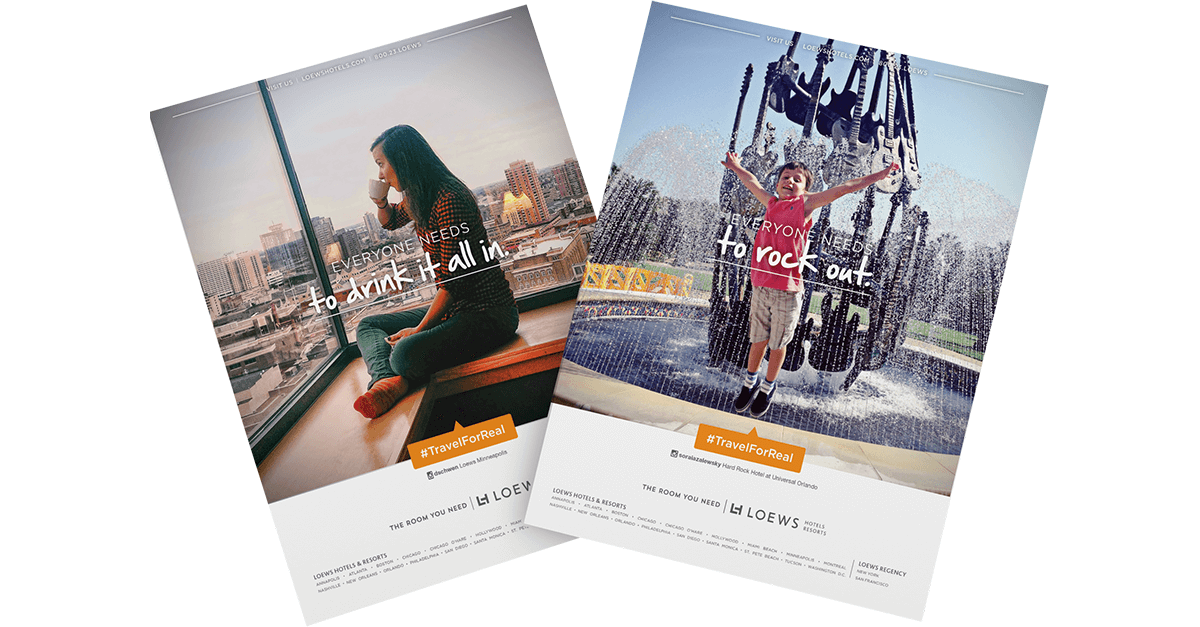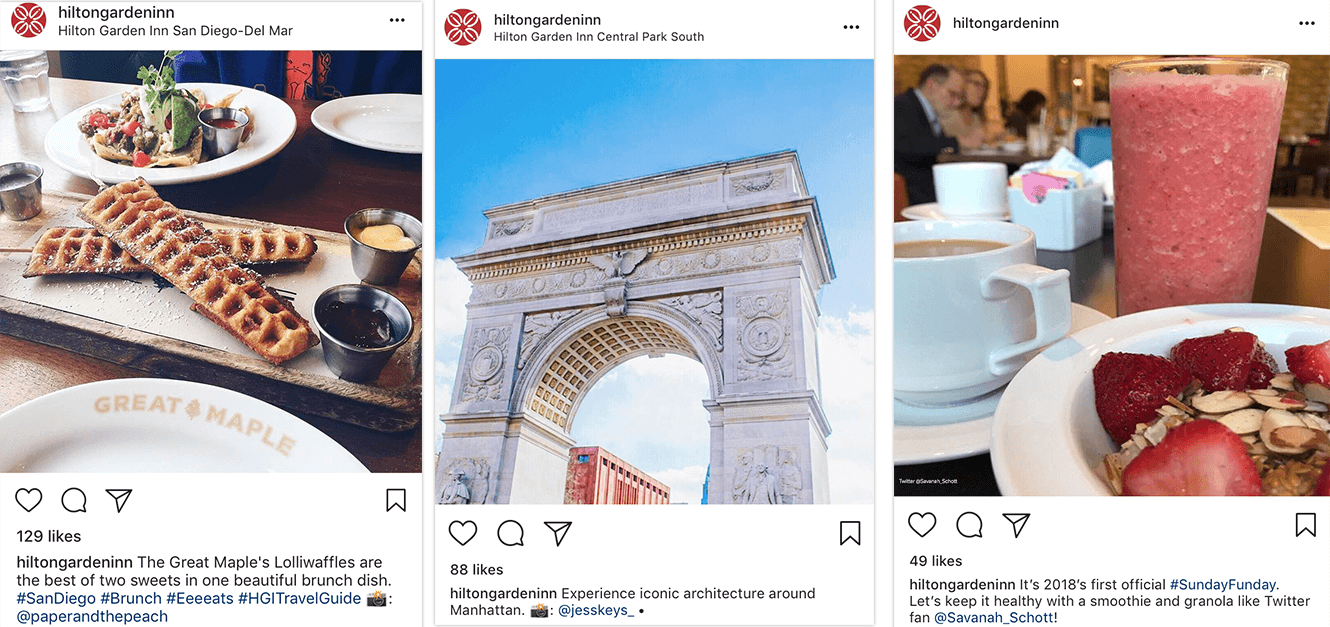Blog
How to Leverage User-Generated Content for Metasearch
Published January 15, 2018 by Jace Niederhaus

The world of digital marketing is always evolving as travel brands try to keep up with consumer needs and the growing demand for transparency and authenticity. One strategy that’s growing in popularity amongst suppliers is leveraging user-generated content (UGC), such as photos and tweets that are shared publicly by customers across various social media sites. By leveraging user-generated content, new audiences are introduced to brands and experiences that they wouldn’t have otherwise explored, thus giving suppliers an additional market to focus on. Consumers these days want to see how things really look and feel, instead of how brands want them to be viewed. A study by Offerpop found that 85% of consumers find visual user-generated content more influential than branded videos and photos. Although you’re starting to see travel brands incorporate this strategy more across different marketing channels, there’s still an open opportunity to incorporate user-generated content into your metasearch campaigns.
How User-Generated Content is Being Used in Travel Marketing Now
A few travel brands have already started employing their audiences by adopting user-generated content into their online advertising, specifically on social media sites like Facebook, Instagram, and Snapchat. These brands aren’t just engaging with their guests, but they’re communicating with them and sharing their photos to promote their travel experience to other potential guests. Loews Hotels found success with their #TravelForReal campaign that spanned across digital and print ads. The ads featured creative from Instagram photos taken by customers on-property, turning the guests into both the ad models and the photographers. They asked their guests to tag their photos with #TravelForReal so they could share an authentic perspective of the experience at their properties, something you can’t always get from traditional marketing visuals. Hilton Garden Inn has grown their presence on Instagram and they are another great example of how to leverage guest-generated content. Recently, a guest posted a photo of her morning breakfast on Instagram and tagged the brand in her post. Hilton Garden Inn commented on the photo as well as shared it on the brand’s Instagram feed. By doing this, they were able to portray some of the delicious breakfast options available at their hotel and share an authentic perspective of the guest experience.
Hilton Garden Inn has grown their presence on Instagram and they are another great example of how to leverage guest-generated content. Recently, a guest posted a photo of her morning breakfast on Instagram and tagged the brand in her post. Hilton Garden Inn commented on the photo as well as shared it on the brand’s Instagram feed. By doing this, they were able to portray some of the delicious breakfast options available at their hotel and share an authentic perspective of the guest experience.  While hotels are finding success with their user-generated content across their different social channels, there’s still a great deal of potential to apply these concepts in the metasearch space.
While hotels are finding success with their user-generated content across their different social channels, there’s still a great deal of potential to apply these concepts in the metasearch space. The Opportunity for Metasearch Ads
With user traffic and booking volume growing exponentially across different metasearch publishers, there’s a heightened urgency to maintain consistency with your hotel’s overall impression from a visual standpoint. You’re spending a lot of time and money to create a compelling experience with your brand on various sites, so why not put the same level of attention into your metasearch campaign? When users browse metasearch sites like Google Hotel Ads, TripAdvisor, or Trivago, they experience a similar structure across the board – a property’s name and location, varying rates and availability, and most importantly, property photos and reviews. These photos and reviews carry a lot of weight in the guests’ decision-making process. There are numerous properties on these sites that aren’t portraying the most compelling experience to potential guests with their images. Users want to see more authenticity in order to develop their trust in a brand – they want to see what the experience is really like. Most metasearch publishers give hotels the ability to customize their landing pages and the content within the campaign. With a little bit of research and creativity, you can easily improve your appearance on these sites. The key component will be maintaining the images and reviews to keep them up-to-date and relevant for potential guests. Your hotel probably already has branded social media accounts, but are you promoting the use of hashtags to your guests, or asking them to tag your hotel in the images they post? These are two simple ways to start engaging with them. Once your guests start posting pictures of their stay, comment on their photos and keep their great experience alive. If you find a photo you’d like to add to your metasearch sites, make sure you get permission to repost the content. Check out this article by Later that explains how to properly obtain permission from your guests.What Suppliers Should Do
So now that you’re excited to enhance your metasearch campaign with user-generated content, here’s a high-level process to get started:- Review the photos you currently have on your metasearch landing pages and ask yourself, “Do these images convey the experience that guests will have at my hotel?”
- Browse the major social channels to see what images of your hotel have already been shared
- Interact with your guests’ posts. Create and promote a brand or campaign hashtag, and comment on posts
- Find compelling photos that convey the experience at your hotel and obtain permission to use the photos
- Add them to your metasearch sites and be sure to keep them updated

You may be interested in
GET IN TOUCH
Ready to get started?
Don’t let your brand get lost in the noise. Partner with Koddi to unlock the power of commerce media and transform the way you engage with your customers. Our team of experts is here to help you navigate complexities and develop a strategy that drives results — no matter what industry – in as little as 45 days.